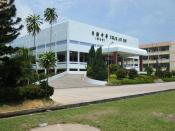The objective of this paper is to give a summarization of the definition; the advantages and disadvantages; ordering systems; and decision making that goes into the Just -In-Time inventory control system.
Definition and History
Just-In-Time (JIT) is a process for optimizing manufacturing processes by eliminating waste including wasted steps, wasted materials, and excess inventory (Damiano, 2004). The Just-in-Time Inventory (JIT) concept was developed in the 1950's by Taiichi Ohno who was employed by the Japanese Toyota Motor Co. Mr. Ohno had observed Henry Ford's processes while visiting America and then taking ideas of his own improved upon Ford's systems. JIT depends upon logistics that include transportation, warehousing, and strategies for handling supply chain uncertainties. Basically everything must happen just in time.
W. Edward Deming
W. Edward Deming was an American statistician and quality control expert who helped develop the first US Census and then later the Japanese Census. Deming's ideas of improving quality while still increasing productivity would become known as Total Quality Management (TQM) and would be strongly embraced by Japan at first, but not in the USA.
The fourteen principals that Deming outlined helped Japan to become an industry leader throughout the world. These principles are as follows:
1) Create contrary of purpose;
2) Take the lead in adopting new philosophy;
3) End the practice of awarding business on the basis of cheapest cost;
4) Improve constantly;
5) Institute training on the job;
6) Institute leadership;
7) Drive out fear;
8) Break-down barriers between departments;
9) Eliminate management by numbers and management by objectives. Substitute leadership;
10) Eliminate slogans, exhortations, and targets;
11) Remove barriers to pride in workmanship;
12) Institute education and self-improvement;
13) Put everybody to work to accomplish the transformation;
14) Cease dependence on inspection to achieve quality.(Hugh, 2001)
Advantages of JIT
The Japanese automobile...


